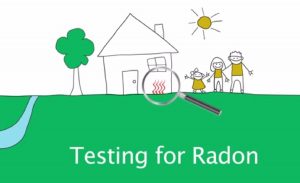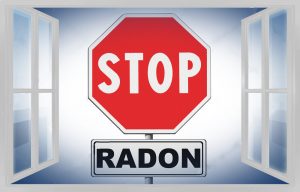Do you need a radon inspector if you’ve been living in a home for longer than 5 years?
Did you know that you could be jeopardizing the health of your family members by spending more time at home over long periods? When you are exposed to radon gas for longer than 5 years, it can actually lead to very serious health implications. Radon can easily accumulate inside homes. Don’t wait. Hire a radon inspector to ensure your safety.
Radon is a harmful gas that is prevalent all around us. It is radioactive, colorless, and odorless. It is almost impossible to detect without the proper equipment or an experienced radon inspector. In fact, you won’t be able to detect it all with your own senses. Radon can be found both indoors and outdoors. However, the real danger comes from inside homes. Here, the gas is able to accumulate in areas where there is little to no ventilation.
Why is radon gas so dangerous?
Radon gas is formed when radioactive metals decay in the ground beneath us. Metals such as Thorium decay in the soil and release radon gas which then seeps its way into the atmosphere. Outdoors, this gas is diluted and carried away by the wind. So, it makes the effects on your body negligible. You are likely breathing in some of the gas when you’re moving around outdoors. However, this level of gas is not enough to kill you.
That being said, this gas is unrelenting in the way it enters into buildings. It finds small cracks around the foundation. Or, it enters through drains and other areas in a slow fashion. Due to its abundance, it is impossible to stop this gas from seeping out of the ground. Over time, the gas simply continues to build up in certain areas around the house until it becomes more deadly.
What You Should Know About Radon Gas
Because it is gas, Radon is constantly moving all around the house, especially in the lower areas such as the basement. It will continue to move around the house finding all the nooks and crannies it is able to accumulate in. This makes different parts of your home unlivable according to recommended radon levels.
Also, radon gas doesn’t kill you immediately. It is a slow process but the more you are exposed to it, the higher the risk of health implications becomes. Each time you breathe in, you are causing these radioactive particles to enter your body and settle on your lung lining. Over time, these can damage the cells in your lungs, eventually leading to a form of lung cancer.
In the US alone, over 20,000 deaths occur every year due to lung cancer resulting from radon gas exposure. It is also estimated that 1 in every 15 homes has a high radon level.
What is a high radon level?
Worldwide health agencies have declared recommended radon levels that are safe to live with. You should note that no amount of radon gas is technically “safe” However, there are levels within which the gas will not be able to cause long-term harm.
If radon levels are over 4 pCi/L, then the house is compromised. You need to take measures to reduce radon levels because it is unsafe. If it is between 2 – 4 pCi/L, there is a slight risk of living at home. Here, you need to be taking preliminary precautions. Anything below 2 is considered to be ‘okay’ to live with.
When should I test for radon?
It is recommended that you test for radon at least once every one or two years. This way you can always identify if radon has been building up in certain areas around your house and then put a stop to it.
If you have been living in a home for 5 years and you haven’t tested even once, you should immediately contact a professional radon company. They will send a radon inspector to do the testing and incorporate any radon control measures to make your home safe again.
Radon gas usually tends to cause lung cancer symptoms when people are exposed to the gas for anywhere between 5 to 25 years. So there is a high chance that you have a radon problem at home if you have never had it tested.
Don’t leave your family’s health to chance. Contact a trusted radon company such as Atlantic Radon to send a radon inspector. They will do an immediate inspection and take corrective measures where necessary. You can even get a free estimate of the whole job beforehand for you to consider.




